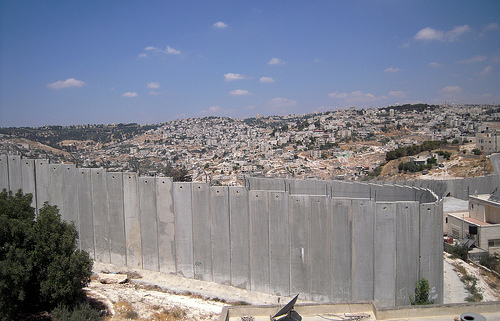
The separation wall at the East Jerusalem suburb of Abu Dis. Last year, two bills were introduced by the Israeli government coalition's members: the Basic Law on Jerusalem, Capital of Israel Bill and the Greater Jerusalem Bill—both designed to substantively alter the borders of Jerusalem and to change its demographics. Introduced during the 50th anniversary year of the 1967 annexation of East Jerusalem, their shared objective was the de facto annexation of the settlement blocs surrounding Jerusalem and the displacement of approximately 140 thousand (one third) of the Palestinian residents of East Jerusalem living in the neighborhoods already effectively detached from the city by the Separation Barrier. The bills were ultimately scrapped as a result of international pressure. Now this may change, with the Trump administration's announcement of recognizing Jerusalem as the capital of Israel and plans to move the US Embassy to the city in May 2018, to coincide with Israel's 70th anniversary. Moien Odeh examines this agenda in a commentary for Jurist.
Photo: Ted Swedenburg via Flickr.
See full story…





